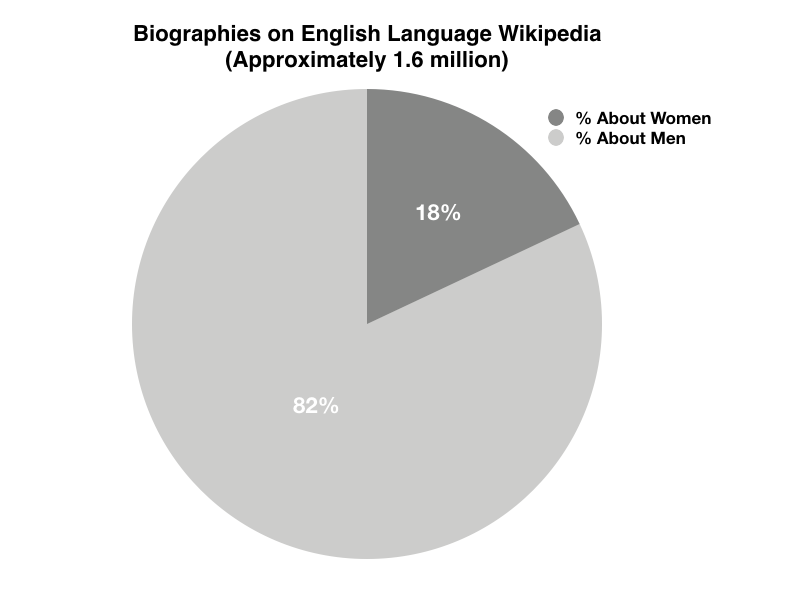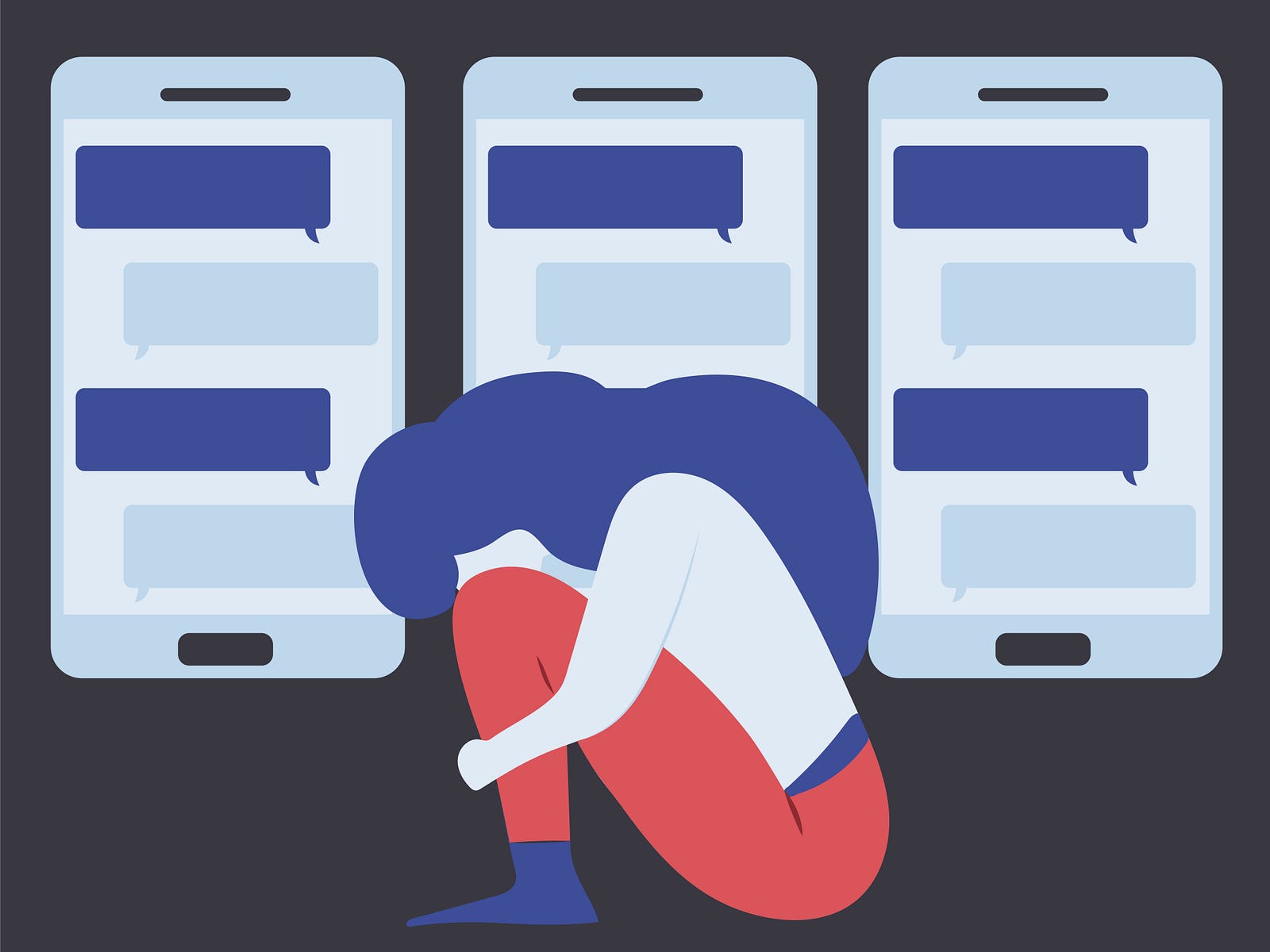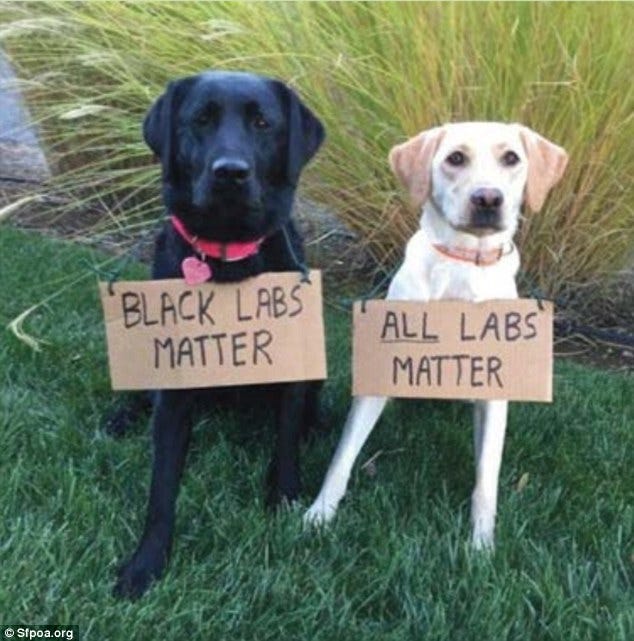There’s No Such Thing as a Web Without Gatekeepers
Avoidance


An inconspicuous and invisible form of silencing that signifies a topic is unimportant. Also used as a strategy to circumvent harassment.
At its most inconspicuous level, silencing is avoidance. Despite the proliferation of open-source platforms, avoidance remains a powerful tactic for obscuring content.
For example, on Wikipedia (dubbed “the free encyclopedia that anyone can edit”), fewer than 18 percent of English-language biographies are about women. People often respond to this statistic with another — most of the people who create Wikipedia content are men, thus explaining the gap. Yet this response only exemplifies the power of avoidance — putting the onus on the historically marginalized to achieve adequate representation.
By actively avoiding topics, those in a dominant position can wield the conversation, affording only some visibility. Suggesting that more women editors would increase the number of biographies about women also fails to account for the fact that Wikipedia can be hostile to women and may be resistant to female participation
This avoidance is not exclusive to Wikipedia. In my professional life, I know of many women who avoid weighing in on social media discussions because they don’t want to deal with the harassment that ensues.
Harassment


A direct and visible form of silencing that intimidates individuals/groups.
Counter to the passive behavior that underlies the silencing impact of avoidance, harassment is a form of silencing that is explicit, direct, and visible.
Numerous reports and research projects demonstrate that women and people of color are continuously at risk of harassment online. (There’s good research about this from the Pew Research Center and the Guardian.) These studies focus on the problems women and people of color face online but tend to focus exclusively on visible forms of harassment, including unwanted sexual advances or innuendo, stalking or repeated contact, verbal threats of violence, doxing, revenge porn, and simulated rape.
Not only is harassment used by others in a community to silence the kinds of expression they don’t like or don’t agree with, but many fail to consider how avoidance also works as a form of self-censorship because of the fear of harassment to begin with. While legislation surrounding online harassment has improved, those frequently harassed are often left with few resources to combat the problem and start avoiding the spaces altogether.
Reappropriation


An implicit and visible form of silencing that shifts the power dynamic of a phrase.
Sociologists and anthropologists use the concept of reappropriation to refer to the process by which a group reclaims artifacts or terms that were previously used in a disparaging way. However, my silencing matrix draws on intersectional and gender theorists to analyze how concepts created to empower historically marginalized groups are diluted in the spirit of inclusivity.
Instead of taking a term that has a negative connotation and giving it power (for instance, the evolution of the word “queer” within the LGBTQ+ community), reappropriation as silencingflips the power of the expression back in favor of those already in a position of privilege, effectively muting or depoliticizing subversive expression.
An apt example of reappropriation as silencing is changing the hashtag #BlackLivesMatter to read#AllLivesMatter. While this subtle action still allows the original hashtag to persist, it also creates a canned response meant to disempower the Black Lives Matter movement. On the surface, #AllLivesMatter seems to foster inclusivity, but this subtle change in text makes Black Lives Matter seem exclusionary and aggressive. Drawing on the “naturalized representation” of #AllLivesMatter, the act of reappropriation enables racism by refusing to engage with social and political issues (like police brutality and racial profiling). AllLivesMatter not only shifts power back to those who already hold it but also allows for a memetic repurposing seen on social media.
Deletion


An explicit but invisible form of silencing woven into most content moderation decisions.
Unlike harassment and reappropriation, deletion is a relatively invisible form of power. This form of silencing starts with a flag, a signal from others in the community that the content is inappropriate or does not meet their standards for inclusion. While these systems for flagging content are often created with the best intentions, a sociological analysis of what results unveils some troubling findings.
In my extensive research on Wikipedia, I find that women are more likely to be categorized as “non-notable” and nominated for deletion. My study of YikYak, a defunct social media app that was once popular on college campuses, found that racist content was regularly removed via its flagging systems (downvoting) but that resistance dialog (for example, Black Lives Matter) was also removed with the same fervor from the community. What these findings indicate is that the content moderation process is largely determined by the opinions of a loud few who take the time to flag content for review.
What my silencing matrix demonstrates is that the freedom of some to be heard and seen is coupled with the “unfreedom of many to communicate without response.” Not only are topics routinely avoided in participatory media environments, my research also demonstrates a more concerted effort to silence. The power to intimidate, rewrite, or delete the contributions of those we don’t agree with is not a power bestowed to a relative few at the top of the big-tech food chain. Discussions that focus exclusively on “the algorithms” or deliberate decisions of top executives distract us from the larger situation at hand: In an era of participatory media, we all have the power to silence, and it comes in many forms. Silencing can be a subtle reframing of a topic so it can align better with our existing ideological positions. It can be the simple gesture of a flag designed to remove content we just don’t like or agree with. Silencing can also be malicious, a deliberate harassment of individuals or organizations to push them off the platform entirely. The fear of harassment or rejection can also create the desire for us to self-censor, avoiding participatory media spaces altogether.
The point of starting this conversation is to better understand the relative importance of community silencing. We regularly argue that technology silences the public, but we have little knowledge regarding how much censorship is bottom-up versus top-down.
In an era of binge watching, status update alerts, scrolling newsfeeds, and trending news vis-à-vis storylines and upvotes, the power of the crowd to silence has disastrous consequences. More attention to this matter is needed, and I’m calling on readers to help. Can you think of other examples of avoidance, deletion, reappropriation, and/or harassment? If you feel comfortable, please share these examples in the comments below. One of the only ways to combat silencing is to amplify the ideas we are trying to push out.
